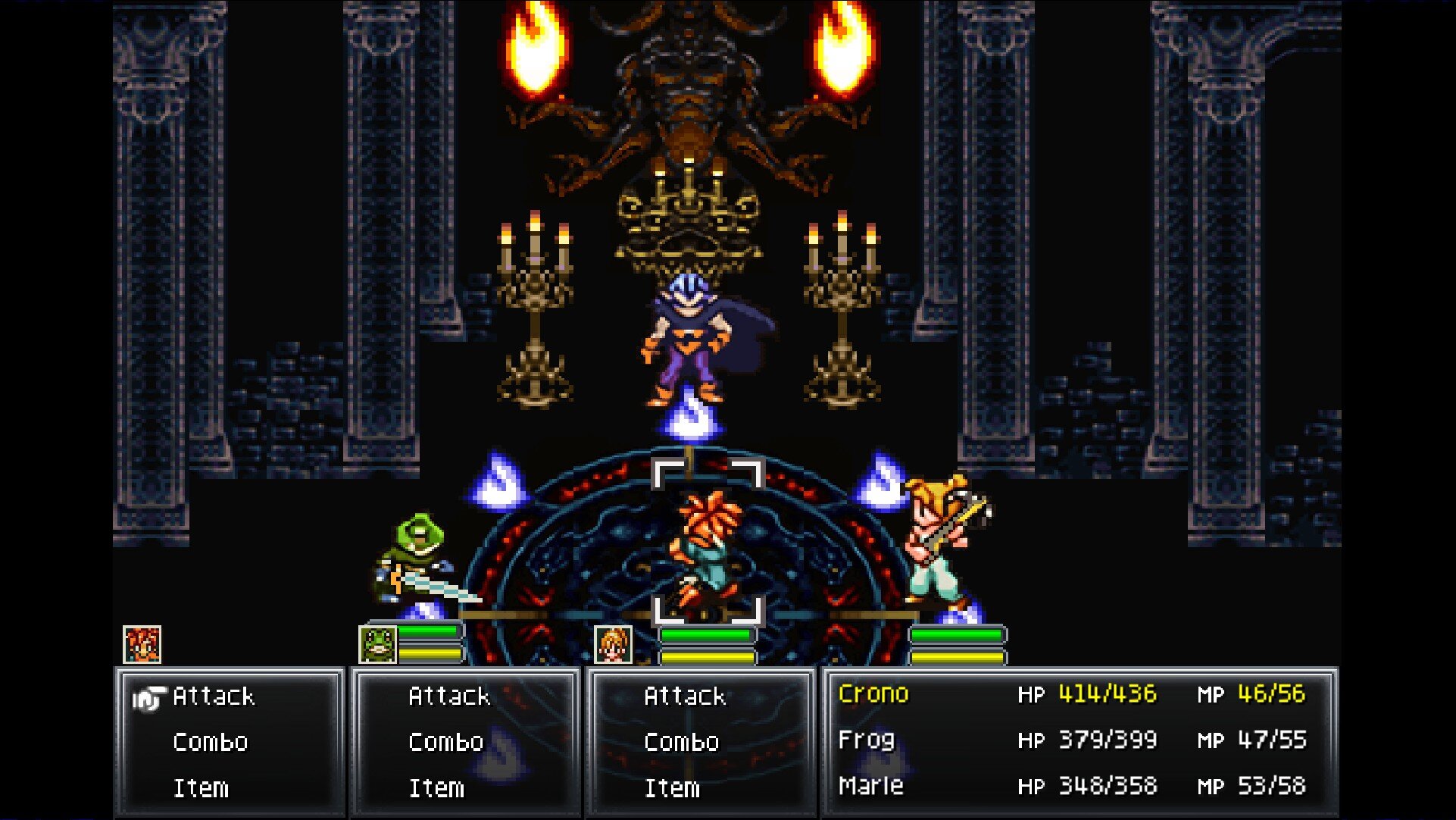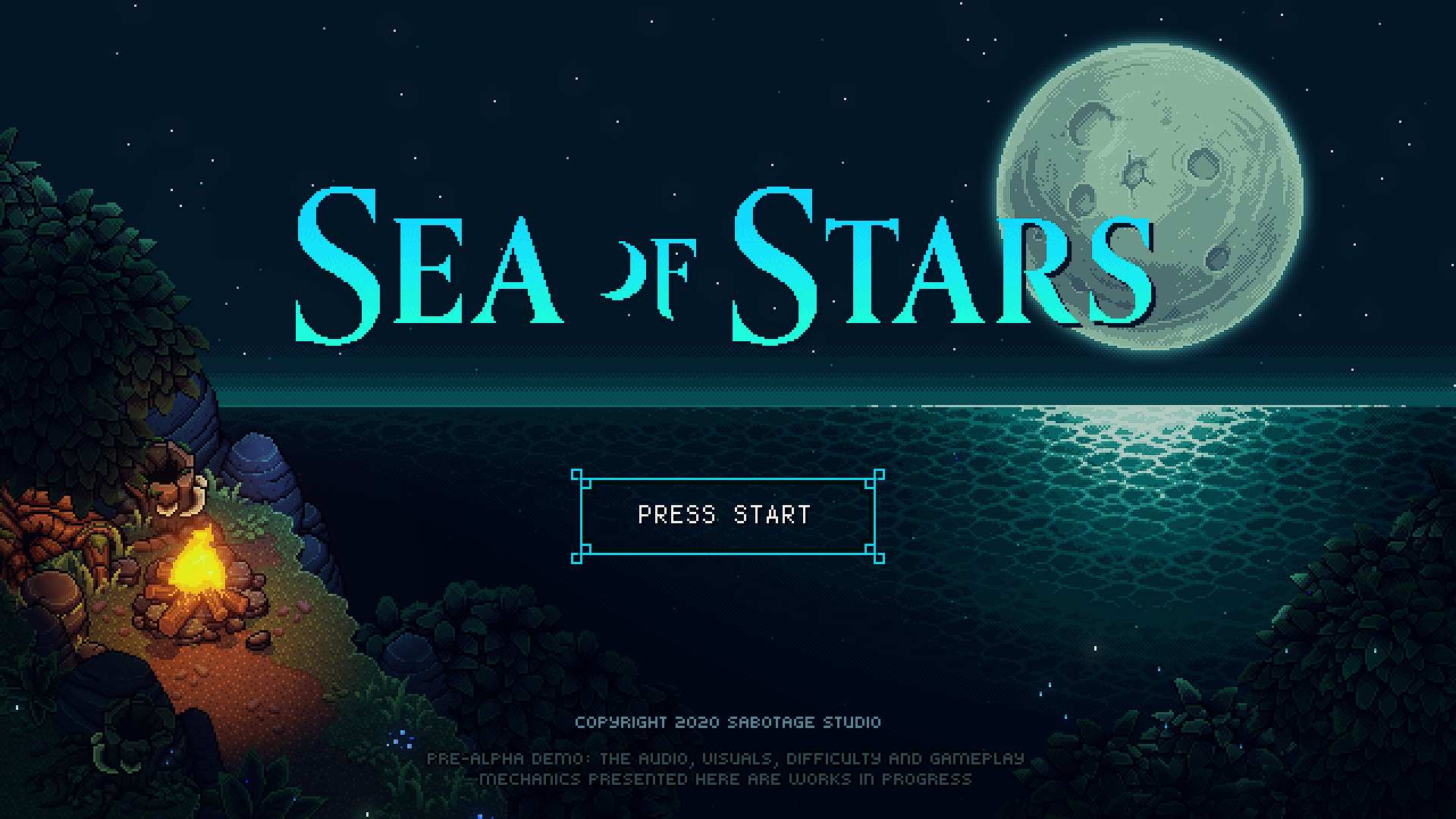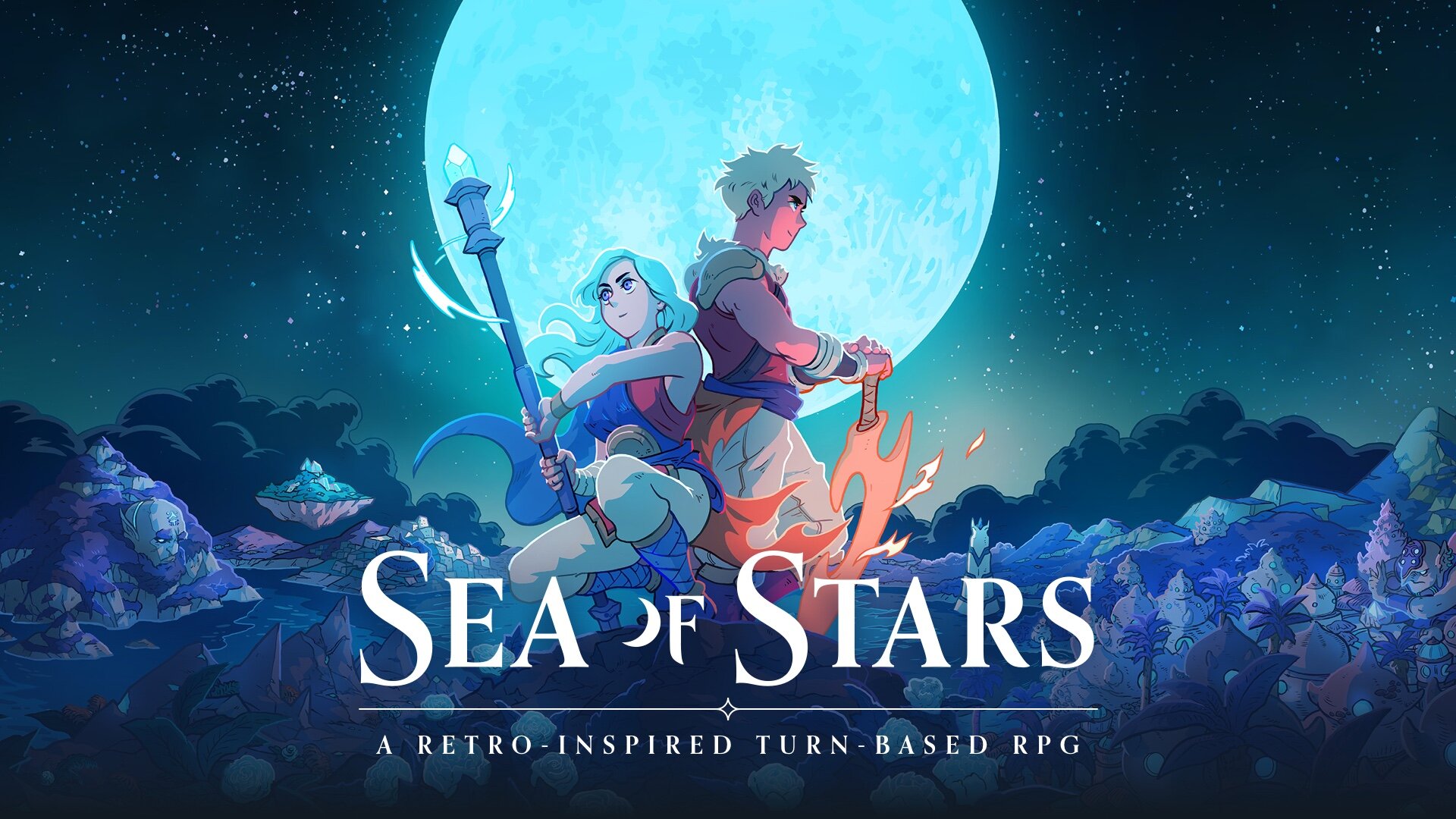Screenshot from the Steam version of Chrono Trigger.
I can’t remember if I played Chrono Trigger on the SNES, but I’m certain I played the PS1 port. I have vivid memories of those animated cutscenes and how much they felt like clips from a cartoon series.
I enjoyed Chrono Trigger when I first played it, but it didn’t leave an impression on me like Final Fantasy VI and Final Fantasy IX did. I’ve seen it espoused to be as close to near-perfect a game can get. I’d assumed a lot of that love was driven by nostalgia. I wanted to replay it to see for myself. Could it really be that good? I expected to enjoy playing it, expected it to be good, great even. But perfect? That’s a bold claim.
A COMPACT 20hr RUNTIME
I had forgotten how compact these retro SNES JRPGs were. Chrono Trigger’s runtime is a compact twenty or so hours. It kicks off at a fast clip and doesn’t let up, with a nonstop string of reveals, twists, and world changing events. There’s no excess in any of the storytelling.
We never linger in one area for too long. The player is in and out of dungeons without any meandering, and even the towns are devoid of the usual need to run-around and talk to everybody. The only buildings we get access to are the important ones, entering inns, shops, and homes of prominent NPCs directly from the world map.
It sounds odd to call twenty hours compact, but that’s how playing Chrono Trigger feels. It gets its hooks in early and pulls you along with ease. Like the video game equivalent of a page-turner.
ACTIVE TIME BATTLES ARE HECTIC BUT REWARDING
The consensus that I often see online is that static turn-based battles are superior to Active Time Battles. The argument being that static turn-based systems allow for more strategy. I used to fall into this category too, but after replaying Chrono Trigger, I’ve developed a new appreciation for ATBs.
ATBs can be hectic and feel nerve-wracking, but that can be part of the fun. It’s also apparent that you’re meant to be able to weather a few extra hits while you’re choosing abilities. This works great at ramping up tension in fights and makes each decision feel urgent.
Recently I replayed Final Fantasy IV and Final Fantasy IX. Both have ATBs that feel cumbersome in regular fights, not moving along fast enough and making these basic encounters drag on. Conversely, both really shine in boss fights, where the extra time is needed to adjust to big hits and stay alive. This makes FF4’s and FF9’s combat feel off-balance, with regular fights being burdensome but boss fights being thrilling and intense. Chrono Trigger doesn’t have this off-balance feel, the regular fights are quick and snappy, while the boss fights are still intense and nerve-wracking, but not so much so that they ever feel unbeatable or unfair. This is why Chrono Trigger turned me around on ATBs, it hits the right balance across all its encounters.
SKIP THE LOST SANCTUM
The Lost Sanctum is a side area that was added to the DS port and then carried over to the Steam port (I think it’s in the mobile version too). It’s dull, repetitive, and just not worth your time.
In The Lost Sanctum you hop through a time portal to find a peaceful reptite village. These reptites give you a handful of fetch quests spanning two eras. That means not only are you running around uninteresting dungeons, but you’re leaving and re-entering the Lost Sanctum over and over in different time periods to run around these uninteresting dungeons.
If you look up anything about it online, you’ll immediately find people complaining about running up and down a mountain. Said mountain is a criss-cross path of rope bridges that spans multiple screens, and the fetch quests have you running up and down it like twelve times, back and forth through different time periods.
The reptite village is bland brown cave walls, with holes that are meant to be “houses” (which you can’t enter), and one table and chair plunked in the corner. All the other villages in Chrono Trigger are on the world map, the only buildings you can enter are the important ones, usually with a packed lived-in (and often cozy) interior design. We don’t need the whole village, we know it’s there, just give us the important buildings. The reptite village doesn’t benefit from having a wide open, empty expanse of a cave system that’s devoid of personality. Just plop us in the tavern and leave the exterior village to our imagination.
It's dull, tedious, and uninteresting. The Lost Sanctum seems to miss the point of what makes Chrono Trigger such a compact and tightly woven experience. Skip it.
STILL LOVABLE 25 YEARS LATER
I don’t have to espouse how great the story is, chances are if you’re reading this you’re already familiar with it. Suffice to say, the story holds up. With lovable characters and a plethora of time hopping storylines, it’s an absolute joyous romp from beginning to end. I get it now, Chrono Trigger really is near-perfect.
If you haven’t played Chrono Trigger, go play it. It’s a phenomenal experience and well worth your time.



